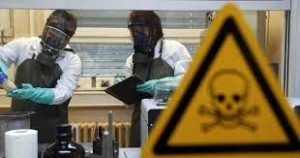Today Current Affairs: 12th March 2022 for UPSC IAS exams, State PSC exams, SSC CGL, State SSC, RRB, Railways, Banking Exam & IBPS, etc
Table of Contents
Ex DHARMA GUARDIAN-2022:

Ex DHARMA GUARDIAN-2022, an annual exercise between Indian Army and Japanese Ground Self Defence Force which commenced on 27 February 2022 at Foreign Training Node, Belgaum successfully culminated on 10 March 2022.
- The conduct of this exercise, which covered a vast spectrum from cross training & combat conditioning in field conditions, to sports and cultural exchanges has been a grand success.
- “Exercise Dharma Guardian” will enhance the level of defence cooperation between the Indian Army and Japanese Ground Self Defence Forces.
What Is Space Junk?

A leftover piece of a spacecraft flying through space reportedly hit the surface of the moon, creating a new crater that may be around 65 feet wide.
- The piece of space junk was is the third-stage booster of Chang’e 5-T1 – a lunar mission launched by the China National Space Administration in 2014.
- The object reportedly weighs around four tonnes and was racing towards the moon at a speed of 9,300 km an hour.
- This is the first recorded unintentional case of space junk hitting the moon.
Project Pluto:
- American astronomer Bill Gray, who runs a blog called Project Pluto, predicted the collision by tracking the object.
- The speed, trajectory, and time of impact were calculated using earth-based telescope observations.
- Project Pluto also supplies astronomical software to amateur and professional astronomers. Gray is the creator of popular astronomy software called Guide.
- Both the earth and the moon have been hit by multiple objects like asteroids throughout their existence, but craters on the moon are of a more permanent nature than those on earth.
- This is because of processes like erosion, tectonics, and volcanism. These three processes keep the surface of the earth crater-free and remove traces of collisions that have happened in the past.
- An absence of atmosphere means there is no wind system and no weather on the moon, and hence no cause for erosion of existing craters.
- Absence of tectonics prevents the moon’s surface from forming new rocks, or causing a shift in the existing surface patterns, unlike that on earth.
- Lastly, absence of volcanism makes it impossible for craters to be covered.
- Currently, the earth has less than 200 known craters while the moon has thousands.
Space Junk:
- Space debris, also called space junk, artificial material that is orbiting Earth but is no longer functional.
- This material can be as large as a discarded rocket stage or as small as a microscopic chip of paint.
- Location: Much of the debris is in low Earth orbit, within 2,000 km of Earth’s surface, though some debris can be found in geostationary orbit 35,786 km above the Equator.
- Issue (Kessler Syndrome) : The free floating space debris is a potential hazard for operational satellites and colliding with them can leave the satellites dysfunctional.
- This is referred to as Kessler Syndrome, named after NASA scientist Donald Kessler in 1978.
- It says if there is too much space junk in orbit, it could result in a chain reaction where more and more objects will collide and create new space junk in the process, to the point where Earth’s orbit becomes unusable – a Domino Effect.
- With countries launching more and more satellites, each one of them being a strategic or commercial asset, avoiding collisions could become a challenge in the future.
- Clearspace-1 (of European Space Agency), which is scheduled to launch in 2025, will be the first space mission to eliminate debris from orbit.
Kudankulam Nuclear Power Project: Latest Update

After Chief Minister M.K. Stalin wrote to Prime Minister Narendra Modi, urging him to halt the construction of the ‘Away From Reactor’ (AFR) facility at the Kudankulam Nuclear Power Project (KKNPP) site for storing nuclear waste, the Kudankulam Village Panchayat, under which the project site falls, has passed a resolution against setting up the facility.
- In the resolution, the ward members also condemned the KKNPP administration for going ahead with the construction of the facility despite opposition from the State government to storing highly radioactive nuclear fuel waste.
- Kudankulam Nuclear Power Plant is the largest nuclear power station in India, situated in Kudankulam in the Tirunelveli district of Tamil Nadu.
- Construction on the plant began on 31 March 2002, but faced several delays due to opposition from local fishermen.
- KKNPP is scheduled to have six VVER-1000 reactors built in collaboration with Atomstroyexport, the Russian state company and Nuclear Power Corporation of India Limited (NPCIL), with an installed capacity of 6,000 MW of electricity.
What Is 1954 Hague Convention?

The United Nations Educational, Scientific and Cultural Organization (UNESCO) has pitched for protective measures to preserve Ukraine’s endangered cultural heritage in light of Russia’s invasion over Ukraine.
- To avoid deliberate or accidental damages, the agency is marking cultural sites and monuments in Ukraine with the distinctive “Blue Shield” emblem of the 1954 Hague Convention for the Protection of Cultural Property in the Event of Armed Conflict.
Hague Convention 1954:
- Through history, armed conflicts always wrought havoc on the lives of people. In addition to its humanitarian toll, conflicts also led to the large-scale destruction of cultural heritage, weakening the foundations of communities, lasting peace and prospects of reconciliation.
- Considering that the preservation of cultural heritage is of great importance for all peoples of the world and thus needs universal protection, the Convention for the Protection of Cultural Property in the Event of Armed Conflict was adopted in 1954 under the auspices of UNESCO.
- This convention is referred to as the 1954 Hague Convention.
- It is the first and the most comprehensive multilateral treaty dedicated exclusively to the protection of cultural heritage in times of peace as well as during an armed conflict.
- Aim: The convention aims to protect cultural property, such as monuments of architecture, art or history, archaeological sites, works of art, manuscripts, books and other objects of artistic, historical or archaeological interest, as well as scientific collections of any kind regardless of their origin or ownership.
- India is party to Hague Convention 1954.
What Are Chemical Weapons?

The US said that Russia could be planning a chemical or biological weapon attack in Ukraine.
- Earlier, Russian claimed that the US had chemical and biological weapons labs in Ukraine, which was denied by the US.
- A Chemical Weapon is a chemical used to cause intentional death or harm through its toxic properties.
Munitions, devices and other equipment specifically designed to weaponize toxic chemicals also fall under the definition of chemical weapons. - The Chemical Weapons Convention Act, 2000 was passed to implement the Chemical Weapons Convention (CWC).
- It provided for the establishment of a National Authority for Chemical Weapons Convention or NACWC.
- This institution, formed in 2005, is the chief liaison between the government of India and the Organization for the Prohibition of Chemical Weapons (OPCW).
Chemical Weapons Convention:
- It is a multilateral treaty banning chemical weapons and requiring their destruction within the stipulated time.
- Negotiations for the CWC began in 1980 at the United Nations Conference on Disarmament.
- The convention was drafted in September 1992 and opened for signature in January 1993. It became effective from April 1997.
- It makes it mandatory to destroy old and abandoned chemical weapons.
- Members should also declare the riot-control agents (sometimes referred to as ‘tear gas’) in possession of them.
- Organisation for the Prohibition of Chemical Weapons is an international organization established by the CWC in 1997 to implement and enforce the terms of the CWC.
- Members:
- It has 192 state parties and 165 signatories.
- India is a signatory of the convention.
- Convention Prohibits:
- The development, production, acquisition, stockpiling, or retention of chemical weapons.
- Transferring of chemical weapons.
- Using chemical weapons.
- Assisting other States to indulge in activities that are prohibited by the CWC.
- Using riot-control devices as ‘warfare methods’.
What Are Biological Weapon?

Biological weapons use microbiological agents (such as bacteria, viruses or fungi) or toxins to intentionally cause death or harm to humans, animals, or plants.
Related Initiatives:
- The 1925 Geneva Protocol banned the use of biological weapons in war.
- India ratified the Geneva Convention in 1950.
- Subsequently, the Biological and Toxin Weapons Convention (BTWC), which entered into force in 1975 prohibited the development, production, stockpiling, acquisition and retention of biological weapons.
- India ratified this in 1974.
Biological Weapons Convention:
- It is a key element in the international community’s efforts to address Weapons of Mass Destruction (WMD) proliferation and it has established a strong norm against biological weapons.
- WMD is a weapon with the capacity to inflict death and destruction on such a massive scale and so indiscriminately that its very presence in the hands of a hostile power can be considered a grievous threat.
- Formally known as “The Convention on the Prohibition of the Development, Production and Stockpiling of Bacteriological (Biological) and Toxin Weapons and on their Destruction”, the Convention was negotiated by the Conference of the Committee on Disarmament in Geneva, Switzerland.
- It opened for signature on 10th April 1972 and entered into force on 26th March 1975.
- Members: 183 States Parties and 4 Signatory States.
- India is a signatory of the convention.
- It effectively prohibits the development, production, acquisition, transfer, stockpiling and use of biological and toxin weapons.
- It was the first multilateral disarmament treaty banning an entire category of Weapons of Mass Destruction (WMD).
MSME Innovative Scheme: Key Points

The Ministry of MSME (Medium, Small and Micro Enterprises) has launched the MSME Innovative Scheme (Incubation, Design and IPR) along with the MSME IDEA HACKATHON 2022.
- It is the combination of existing sub-schemes around incubation, design, and Intellectual Property Rights (IPR) for MSMEs.
- The government also announced equity support of up to Rs 1 crore for commercialisation of ideas, designs and patents across all three sub-schemes and also to help MSMEs further scale up to raise subsequent funding.
- For this, a separate corpus will be created and managed by SIDBI (Small Industries Development Bank of India) as the fund manager.
- SIDBI set up on 2nd April 1990 under an Act of Indian Parliament, acts as the Principal Financial Institution for Promotion, Financing and Development of the MSME sector as well as for co-ordination of functions of institutions engaged in similar activities.
- The new scheme will ensure support through guidance, financial support, technical support, and more to MSMEs to scale up.
- The new scheme would act as a hub for innovation activities facilitating and guiding the development of ideas into viable business propositions that can benefit society directly and can be marketed successfully.
Current Account Deficit : Key Points

An American financial services company Morgan Stanley has predicted that the Current Account Deficit will widen to a 10-year high of 3% of GDP in FY23.
- In the wake of continued geopolitical tensions, the surge in oil prices is likely to be sustained, which would lead to deterioration in the current account deficit from a higher oil import bill.
- The Balance of Payments (BoP) to be in deficit of approximately 0.5-1% of GDP (Gross Domestic Product) because capital flows are likely to be lower than the current account deficit.
- The extent of vulnerability to funding risks will be cushioned by the large forex reserves, which stand at USD 681 billion.
- The company expects the April 2022 policy to mark the process of policy normalization with a reverse repo rate hike.
- However, if the RBI were to delay its normalization process, the risk of disruptive policy rate hikes would rise.
- There is less room for fiscal policy stimulus to support growth given high deficit and debt levels – it is seen that there is a possibility of a modest fuel tax cut and reliance on the national rural employment program as an automatic stabilizer.
- A current account deficit occurs when the total value of goods and services a country imports exceeds the total value of goods and services it exports.
- The balance of exports and imports of goods is referred to as the trade balance. Trade Balance is a part of ‘Current Account Balance’.
- According to an earlier report of 2021, High Oil Imports, High Gold Imports are the major driving force, widening the CAD.
Species Richness Survey: Highlights

Every year, the Wildlife Department of Forests and Wildlife Preservation, Punjab, conducts waterbirds census exercise in six major and most biodiverse wetlands, which include the Nangal Wildlife Sanctuary, the Ropar Conservation Reserve, the Harike Wildlife Sanctuary, the Kanjli Wetland, the Keshopur-Miani Community Reserve and the Ranjit Sagar Conservation Reserve.
- However, the census could not be done this year on account of dense fog conditions. Instead a “species richness” survey was conducted by the Department of Forests and Wildlife Preservation with the support from the WWF-India.
- According to Wetlands International (WI), waterbirds are defined as species of birds that are ecologically dependent on wetlands.
- These birds are considered to be an important health indicator of wetlands of a region.
Highlights of the survey:
- 91 species of waterbirds were recorded from the six protected wetlands.
- The waterbird count was highest in the Harike Wildlife Sanctuary followed by the Keshopur–Miani Community Reserve, Ropar Conservation Reserve and Nangal Wildlife Sanctuary.
- Wetlands like Keshopur–Miani and Shallpattan are the only wetlands in Punjab to host the migratory population of common crane and resident population of the Sarus crane.
- The Ropar and Nangal wetlands host the three migratory water species of the family Podicipedidae i.e., black-necked Grebe, Horned Grebe and Greater Crested Grebe along with the resident Little Grebe.
- Eurasian Coot was one of the most common waterbirds spotted in almost all protected wetlands of Punjab during the survey.
- The species of high conservation significance recorded during the survey include:
- Bonelli’s Eagle, Greater Spotted Eagle, Northern Lapwing, Peregrine Falcon, Steppe Eagle, Western Black-tailed Godwit, Black-headed Ibis, Sarus Crane, Painted Stork, Woolly-necked Stork, Common Pochard, Common Crane, Ferruginous Pochard, Pallid Harrier, River Tern, Indian Spotted Eagle, River Lapwing, Oriental Darter, and Eurasian Curlew.
Central Asian flyway:
- Every winter, the birds make their way to India through the central Asian flyway, which covers a large continental area of Europe–Asia between the Arctic and the Indian Oceans.
- Central Asian Flyway (CAF) covers a large area of Eurasia between the Arctic and Indian Oceans.
- Including India, there are 30 countries under the Central Asian Flyway.
- The CAF comprises several important migration routes of waterbirds, most of which extend from the northernmost breeding grounds in Siberia to the southernmost non-breeding wintering grounds in West Asia, India, the Maldives and the British Indian Ocean Territory.




